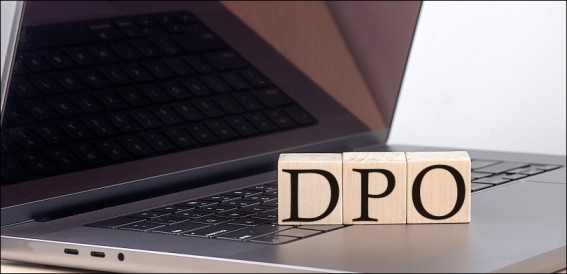Introduction
In the stock market, Initial Public Offerings (IPOs) mark a significant milestone in a company’s journey, transitioning from a private to a public entity. However, IPOs are not one-size-fits-all, and investors encounter different types: SME IPOs, GMP IPOs, and Mainboard IPOs. Each caters to distinct market segments, with SME IPOs focusing on small and medium-sized enterprises, GMP IPOs reflecting grey market premium insights, and mainstream IPOs involving larger, well-established companies. Understanding each IPO type’s unique characteristics, risks, and opportunities is essential for investors to align their strategies with their financial goals. This article delves into these differences, offering insights to guide investment decisions.
Topics Covered :
- What is an IPO?
- Key Differences Between SME IPO, GMP, and Mainboard IPO
- Implications for Investors
- The Impact of Economic Conditions on IPOs
- Conclusion
What is an IPO?
An Initial Public Offering (IPO) is the process by which a private company offers its shares to the public for the first time, allowing it to raise capital from a wide range of investors. This event marks the company’s transition from private ownership to a publicly traded entity, where its shares are listed on a stock exchange. The funds raised through an IPO can be used for various purposes, such as expanding operations, paying off debt, or investing in new projects. IPOs are significant for investors as they provide an opportunity to buy shares in a company at its market entry point, potentially benefiting from future growth. However, IPO investments also carry risks, including market volatility and company performance uncertainties.
1.SME IPO
SME IPOs, or Small and Medium Enterprise IPOs, are designed for companies operating in the small and medium-sized business sector. These IPOs are listed on specialized exchanges such as the SME Platforms of the Bombay Stock Exchange (BSE SME) or the National Stock Exchange (NSE Emerge). The primary purpose of an SME IPO is to provide smaller companies with the opportunity to raise capital from the public market, which can help them expand their operations and grow their business.
Key Characteristics:
. Size and Scale: SME IPOs typically involve companies with a smaller market capitalization compared to large, established firms. These companies are often in the early stages of growth or niche markets.
. Regulatory Requirements: The regulatory requirements for SME IPOs are generally less stringent compared to Mainboard IPOs. This is designed to ease the process for smaller companies.
. Investment Size: Due to their smaller scale, SME IPOs usually involve lower investment amounts compared to Mainboard IPOs.
. Liquidity: SME stocks may have lower liquidity compared to Mainboard stocks, which can impact trading volumes and price stability.
Advantages:
. Access to Capital: SME IPOs provide small businesses with access to public capital markets, enabling them to raise funds for expansion and growth.
. Market Visibility: Going public can enhance a company’s visibility and credibility in the market.
Challenges:
. Limited Liquidity: SME stocks may face liquidity issues, which can affect trading and price stability.
. Higher Risk: Investing in SME IPOs can be riskier due to the smaller size and less established track record of these companies.
2. GMP IPO
GMP IPO, or Grey Market Premium IPO, refers to the premium that a stock commands in the grey market before its official listing. The grey market is an unofficial market where shares of IPOs are traded before they are formally listed on a stock exchange. GMP provides a glimpse into the potential performance of an IPO based on investor sentiment and demand in the grey market.
Key Characteristics:
. Pre-Listing Trading: GMP is not an official measure but is used by investors to gauge the potential success of an IPO based on pre-listing trading activity.
. Investor Sentiment: The GMP reflects investor sentiment and expectations regarding the IPO’s performance. A high GMP indicates strong demand and potential for a successful listing.
. Volatility: GMP can be highly volatile and may change rapidly based on market conditions and investor perception.
Advantages:
. Market Sentiment Indicator: GMP provides an indication of investor sentiment and the potential success of an IPO.
. Early Insights: Investors can gain early insights into the potential performance of an IPO before its official listing.
Challenges:
. Lack of Regulation: GMP is not regulated by any official body, and its reliability can vary.
. Speculative Nature: GMP is often speculative and may not always reflect the actual performance of the IPO once listed.
3. Mainboard IPO
The Mainboard is the primary listing platform for large-cap and established companies. Mainboard IPOs are subject to stringent regulatory requirements and involve a more rigorous listing process.
Key features of Mainboard IPO:
. Eligibility: Companies meeting stringent financial performance and governance standards are eligible for a Mainboard IPO.
. Listing platform: Shares of Mainboard IPO-listed companies are traded on the main boards of NSE and BSE.
. Investor profile: Mainboard IPOs attract a broader investor base, including retail investors, institutional investors, and foreign portfolio investors.
. Regulations: Mainboard IPOs are subject to stringent regulatory requirements, including detailed disclosures, investor protection measures, and compliance with listing agreements.
. Advantages: Higher liquidity, better investor recognition, and access to a wider pool of investors.
. Challenges: Higher listing costs, longer approval process, and intense scrutiny from market regulators.
Key Differences Between SME IPO, GMP, and Mainboard IPO
| Feature | SME IPO | GMP | Mainboard IPO |
|---|---|---|---|
| Nature | IPO type | Market indicator | IPO type |
| Eligibility | Based on SME criteria | Not applicable | Based on large-cap criteria |
| Listing platform | SME platform | Not applicable | Main board |
| Investor profile | Risk-tolerant investors | Speculative investors | Broad investor base |
| Regulations | Relaxed | Not regulated | Stringent |
| Advantages | Lower costs, quicker process | Potential for high returns | Higher liquidity, better recognition |
| Challenges | Higher risk, lower liquidity | Speculative in nature | Higher costs, longer process |
Implications for Investors
The choice between investing in an SME IPO, a Mainboard IPO, or relying on GMP information depends on an investor’s risk appetite, investment horizon, and financial goals.
. Risk-tolerant investors: May consider SME IPOs for potentially higher returns but should be prepared for higher risk and lower liquidity.
. Conservative investors: May prefer Mainboard IPOs for lower risk and better liquidity but may miss out on higher potential returns.
. Short-term traders: May use GMP as a speculative tool but should be aware of the inherent risks involved.
The Impact of Economic Conditions on IPOs
Economic conditions play a pivotal role in determining the success of IPOs. Factors such as GDP growth, interest rates, inflation, and market sentiment can significantly influence investor appetite and the overall IPO market.
Economic Indicators and IPO Performance
. GDP growth: A robust economy with high GDP growth rates typically fosters a positive investment climate, encouraging companies to go public and investors to participate in IPOs.
. Interest rates: Lower interest rates can stimulate borrowing and investment, creating a favourable environment for IPOs. Conversely, rising interest rates can dampen investor enthusiasm.
. Inflation: High inflation can erode purchasing power and increase uncertainty, negatively impacting IPO performance.
. Market sentiment: Investor confidence and market sentiment are crucial for IPO success. Positive market conditions attract more investors, leading to higher valuations and successful IPOs.
. The Impact on SME and Mainboard IPOs
. SME IPOs: SME IPOs are generally more sensitive to economic downturns. These companies often rely on external funding for growth, and a challenging economic environment can hinder their ability to raise capital through an IPO.
. Mainboard IPOs: While Mainboard IPOs are less susceptible to economic fluctuations due to the larger size and established nature of the companies, they are not immune to market downturns. A weak economy can impact investor sentiment and valuations.
Strategies for Navigating Economic Cycles
Issuing companies:
. Timing the IPO: Issuing companies should carefully consider economic conditions when planning an IPO.
. Financial prudence: Maintaining a strong financial position can help companies weather economic storms.
. Diversification: Expanding into multiple business segments can reduce reliance on a single industry.
Investors:
. Diversification: Building a diversified portfolio can help mitigate risks associated with economic cycles.
. Long-term perspective: Focusing on long-term investment goals can help investors ride out short-term market fluctuations.
. Due diligence: Thoroughly researching companies and understanding the underlying business fundamentals is crucial.
Conclusion
In summary, SME IPOs, GMP IPOs, and Mainboard IPOs cater to different segments of the market and serve distinct purposes. SME IPOs are geared towards small and medium-sized enterprises looking for capital and market visibility. GMP IPOs indicate pre-listing investor sentiment and potential performance. Mainboard IPOs involve large, established companies seeking substantial capital and offering higher liquidity.
Understanding the differences between these types of IPOs can help investors make more informed decisions based on their investment goals, risk tolerance, and market expectations. Whether you are interested in the growth potential of SME IPOs, the early insights provided by GMP, or the stability and scale of Mainboard IPOs, each type of IPO offers unique opportunities and challenges.



















